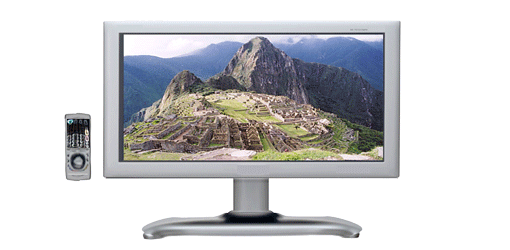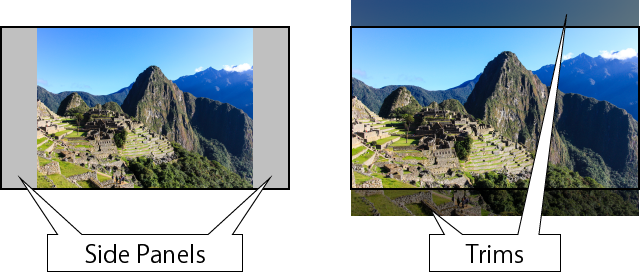High Definition Television (HDTV)
High Definition Television Program
1920×1080 high resolution is very impressible feature in ISDB-T.

A wide panel TV set, standard definition programs are displayed either with side panels or trims.

HDTV stands for high definition television.
- HDTV gives very clear pictures with vivid colors and more than five times more detail than ordinary standard definition TV. It also provides CD-quality audio in 5.1-channel surround stereo (cinema-style ‘surround sound’).
- HDTV uses 1,125 scanning lines(1,080 effective scanning lines) compared to the 525 or 625 lines that make up a conventional television image. That is what it makes HDTV images so sharp and realistic. And these images are broadcast digitally, eliminating the noise that affects analog broadcasts so the viewers can enjoy crystal clear pictures without any degradation.
- HDTV also uses a widescreen format that provides a more natural match for the human field of view.
- ‘Widescreen’ is the term used to describe the picture format of digital television broadcasts. Its ratio 16:9 (sixteen-to-nine) refers to the ratio of picture width to height.
- HDTV offers a superb color performance. HDTV images have much more color information than conventional analog TV images. Contrary to the conventional analog TV system, HDTV system transmits brightness and color information separately. Therefore HDTV provides sparkling images with vivid clarity colors.
- ISDB offers not only clear and crisp pictures but also CD-quality sound. The high-fidelity audio is also encoded digitally to eliminate noise and make it possible to faithfully reproduce the studio sound. With a 5.1 surround audio system, viewers can enjoy various programs in their own home theaters. To fully enjoy the 5.1 surround sound broadcasting, viewers should use a six-channel speaker system comprising three front channels, two rear channels and a sixth channel for additional bass sound.
